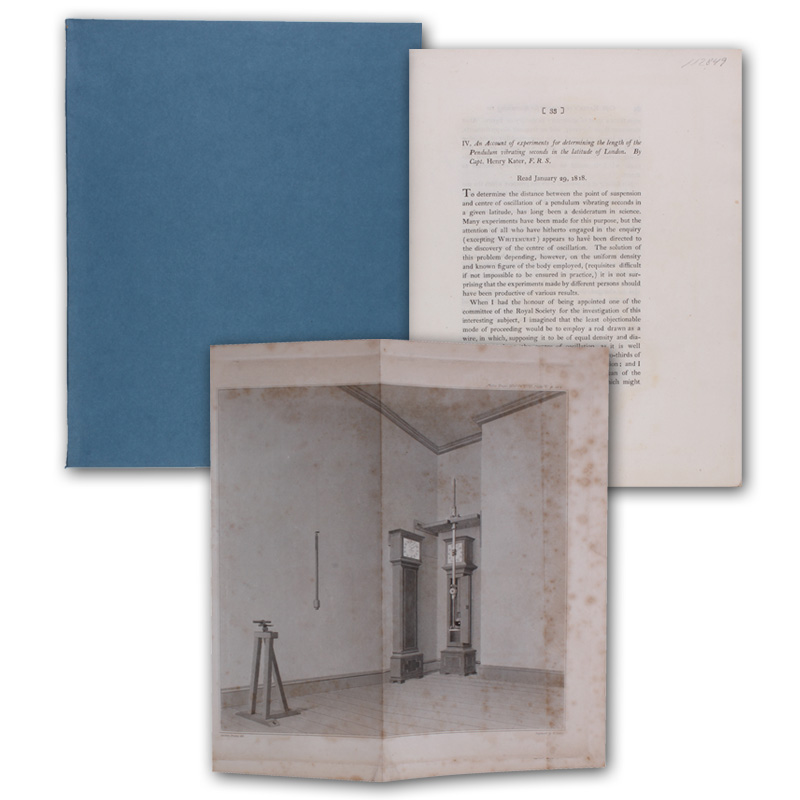112849-01
An account of experiments for determining the length of the pendulum vibrating seconds in the latitude of London.
(London, Taylor), 1818. - (29 x 23 cm). SS. 33-102. Mit 2 gefalteten Kupfertafeln. Moderne Broschur, unbeschnitten. (Aus: Philosophical Transactions of the Royal Society).
Erste Ausgabe der Beschreibung seines berühmten Pendelexperiments, für das er 1817 die "Copley Medal" verliehen bekam. - "On the basis of the principle enunciated by Huygens that the centers of suspension and oscillation are interchangeable, Kater devised a reversible pendulum (which became known as 'Kater's pendlum') with knife edges accurately adjusted to lie at the conjugate points. By using the distance between these points as the 'length' in the formula for a simple pendulum, he was able to determine with great accuracy the length of a pendulum beating seconds under specified conditions. He thereby obtained accurate values for 'g', the acceleration due to gravity, at several stations of the Trigonometrical Survey of Great Britain and estimated the ellipticity of the earth. Kater performed these experiments as a member of a committee appointed by the Royal Society in response to a request by the government for assistance in standardizing weights and measures" (DSB). - Tafeln etwas stockfleckig, Text sehr sauber. - DSB 7, 262
An account of experiments for determining the length of the pendulum vibrating seconds in the latitude of London.
(London, Taylor), 1818. - (29 x 23 cm). SS. 33-102. Mit 2 gefalteten Kupfertafeln. Moderne Broschur, unbeschnitten. (Aus: Philosophical Transactions of the Royal Society).
Erste Ausgabe der Beschreibung seines berühmten Pendelexperiments, für das er 1817 die "Copley Medal" verliehen bekam. - "On the basis of the principle enunciated by Huygens that the centers of suspension and oscillation are interchangeable, Kater devised a reversible pendulum (which became known as 'Kater's pendlum') with knife edges accurately adjusted to lie at the conjugate points. By using the distance between these points as the 'length' in the formula for a simple pendulum, he was able to determine with great accuracy the length of a pendulum beating seconds under specified conditions. He thereby obtained accurate values for 'g', the acceleration due to gravity, at several stations of the Trigonometrical Survey of Great Britain and estimated the ellipticity of the earth. Kater performed these experiments as a member of a committee appointed by the Royal Society in response to a request by the government for assistance in standardizing weights and measures" (DSB). - Tafeln etwas stockfleckig, Text sehr sauber. - DSB 7, 262
250 €

